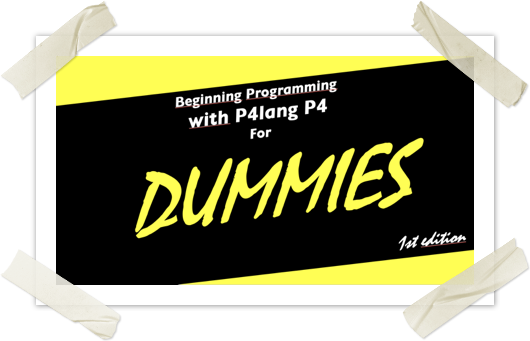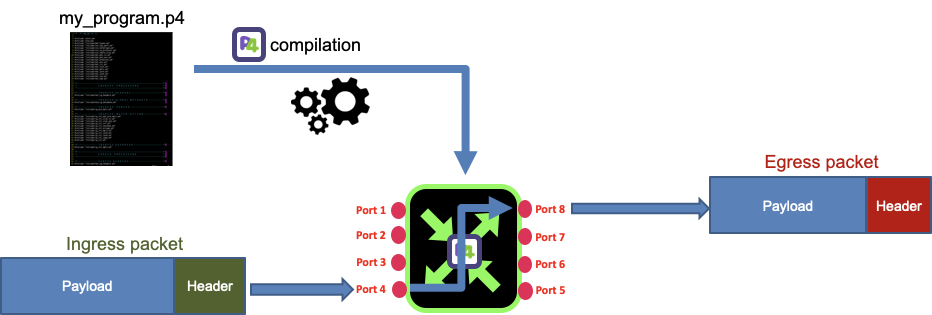Requirement
|
Overview
P4 is a language for programming the data plane of network devices. From p4.org web site:
«P4 is a domain-specific programming language for specifying the behaviour of the dataplanes of network-forwarding elements. »
Article objective
This 1st article exposes:
- A brief introduction to the P4 language
- A basic P4 development workflow
- Some basic specificities of the P4 language
Note
This article is preliminary a pure introduction to P4lang P4. It does not correspond in any way to an extensive programming language description nor a P4 compilation guide.
Diagram: P4 development workflow
[ #001 ] - Cookbook: P4 development workflow
Router for Academia Research & Education (RARE) & P4
Conclusion
In this article you:
- had a brief introduction of P4Lang P4 language
- had been presented a 10 thousand feet view of P4 development workflow
- had been exposed a list of P4 targets and the use cases enabled by these targets
P4Lang P4 for dummy [ #001 ] - key take-away
__THE__ exciting INNOVATION provided by P4 boils down into this community language that unlocks and opens for you the door of system's dataplane. Till now, dataplane programming was reserved to commercial vendors. Some of these dataplanes like the well known CEF (Cisco Express Forwarding) are specific to Cisco equipment. Juniper, has its own dataplane (not sure about the name) implemented by Forwarding Plane component. (example of vMX architecture)
P4 language inherent characteristics:
- Behavioral programming language
- Language with constraints
- Limited number of variable types
- With fixed size
- P4 is not a general purpose language, You cannot program any software. like C, C++ or Java
It is therefore a simple language, that is easier to be tamed by network managers rather than pure software developers. Indeed, writing a P4 program is all about defining the behavior of a network packet processing algorithm based on intrinsic variables encoded into the packet header.


